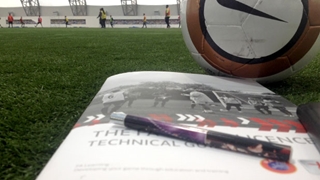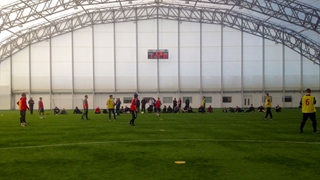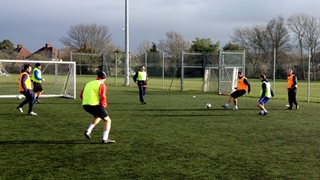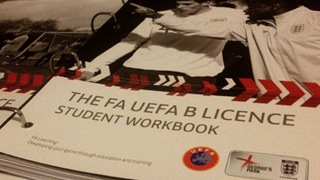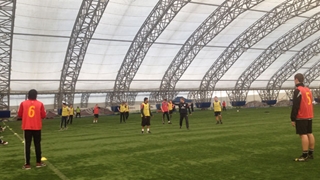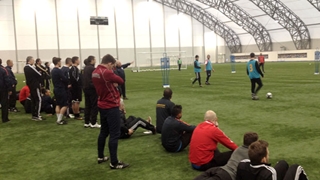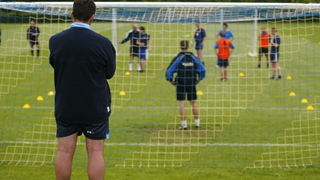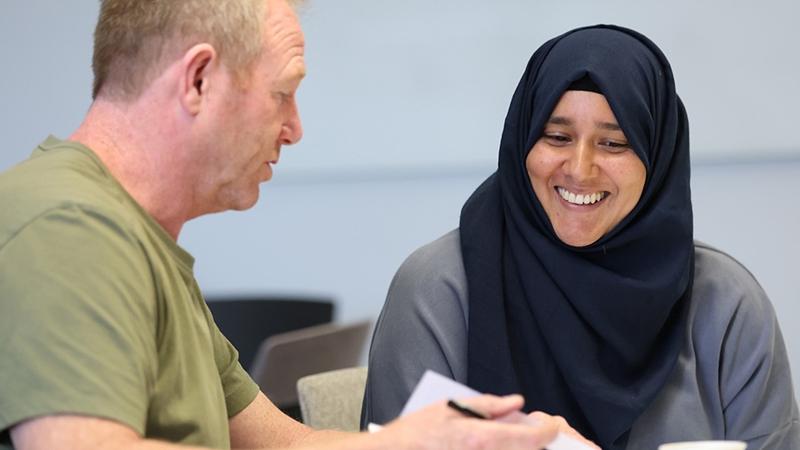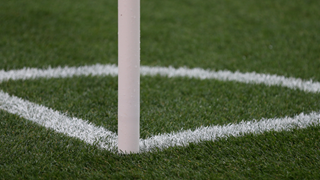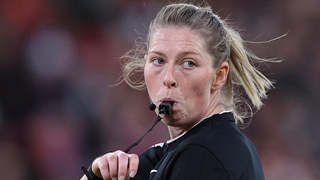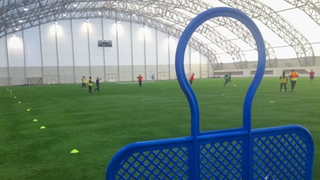
FA Editor Jamie Bradbury has taken his next steps along the coaching pathway and is now working towards the UEFA B coaching licence.
Day eight was for the students to get another chance to coach...
After some final tinkering with my session plan on the train to London, our first discussion at the Soccerdome was about the previous day's student sessions and what we can take out of them.
Some of the key thoughts that were mentioned were;
- session organisation - understand practice formats and what one is best to deliver deliver your topic
- technical details - understand the finer technical points of what you are coaching
- reflection - ensure you look back and honestly review your sessions, think about what you could have done better, what you did well and work out where you are as a coach right now.
All these help to not only deliver our sessions better, but have a realistic understanding of where we are on our coaching journey. Not everyone will pass the course in September, it can be a three year path, so we just have be honest with ourselves.
We knew we had a long day ahead of us with ten student sessions on the agenda - I was scheduled in for number seven, so would have to wait until after lunch. In fact, we all had to wait a little longer while we tackled assignment seven in our course packs - fitness analysis and planning.
Other courses touch on this sort of stuff, but the UEFA B goes into a little bit more detail, and we also have to go away and plan a series of fitness sessions at our clubs.
Eventually we got out on the indoor 3G pitch and it was time to get active. We had four 25-minute sessions lined up before lunch and six after, and it was likely I'd be involved in most of them.
The sessions we did are list below, and I've also drawn my one up on The FA Coach's App which you can download;
- Phase of Play: Coach wingers and full-backs to attack down flanks (Jade)
- Phase of Play: Coach a team to defend against counter-attacks (Steve)
- Phase of Play: Coach clever play by attackers in attacking half (Rick)
- Small-Sided Game: Coach a team to prevent opponents playing through (Pablo)
- lunch
- Functional Practice: Coach two strikers to combine to create goal scoring opportunities (Erdal)
- Phase of Play: Coach a team to defend in its own half of the field (me) - click here to download session plan (pdf)
- Phase of Play: Coach a team to play out from the back (Dan)
- Small-Sided Game: Coach a team to man-mark (Ricardo)
- Small-Sided Game: Coach a team to defend early when appropriate (Owen)
So it was an action packed, tiring day, but really enjoyable - especially the coaching bit. It's great when you can coach with a full squad of players, with all the equipment and goals - not many clubs have that luxury until they move up the ladder.
When I received my topic 'Phase of Play - Coach a team to defend in its own half of the field', I began by working out what the session would look like; size of pitch, number of players, even which players I'd pick on both teams.
At my club, we play a 4-3-3 or 4-5-1 formation, so I built my practice around that. Following the advice given – two units v two units and an overload – I set up the team I was coaching as a 4-3-1, eliminating the two wide players. The opposition would be 2-3-3, eliminating the two full-backs.
I then considered the starting point for the practice, allowing my team to defend as the opposition central defenders began by bringing the ball out from the back and, as they approached the half-way line, my team would engage.
For the first two or three minutes I just let them play to get used to the session and get in a rhythm before I started working on faults.
In my plans I thought about what technical points I wanted to get across, which players I would work with and how things affect the unit and the team.
One of the first players I looked at when I delivered the session was the number nine, my forward, who would be the first person to engage and would try to make play predictable. His movement would then trigger the other players to react.
I tried to cover as many players and possible, and also get the keeper involved in helping to organise his back four. It was an enjoyable 25 minutes, and I think the players engaged well – I won’t linger on the fact that the opposition failed to score!
Tutor Ed McCluskey had been observing my session and afterwards we had a few minutes chatting to review how it went. The evaluation sheet had a mix of crosses and ticks, while Ed also made a few comments.
His notes said: “A phase of play must be two complete units”. I used 4-3-1 v 4-3-1, and while this was two complete units in my view, it may have been better to keep it simple and use a 4-4-2 as a base.
He suggested that I “use re-creation to realistically emphasise the focus of topic”, and that if I were to deliver it again I could “reduce the length of pitch. Too much space behind first forward.”
On the plus side I “circulated to stay at heart of the action and praised players, helping when errors occurred”. But the biggest piece of advice I’ll take away is “Use more demonstrations”.
I’m not really sure why, and I even made a mental note of it during the session, but I tend not to demonstrate what I want the players to do. I’ll observe, intervene, coach, and get out.
It was all good feedback from Ed. Evaluating sessions is so important as it’s always about learning and seeing where you can improve, whether on a course or at your club.
And I’ll make a conscious effort to do more demos in future, especially if I get any shooting topics!
Keep checking TheFA.com for more from the UEFA B course. If you have any questions you can follow Jamie on Twitter @jamiebradbury.
To find out more about local coaching courses, visit your County FA website, or for national courses click here.
www.footballcommunion.com




